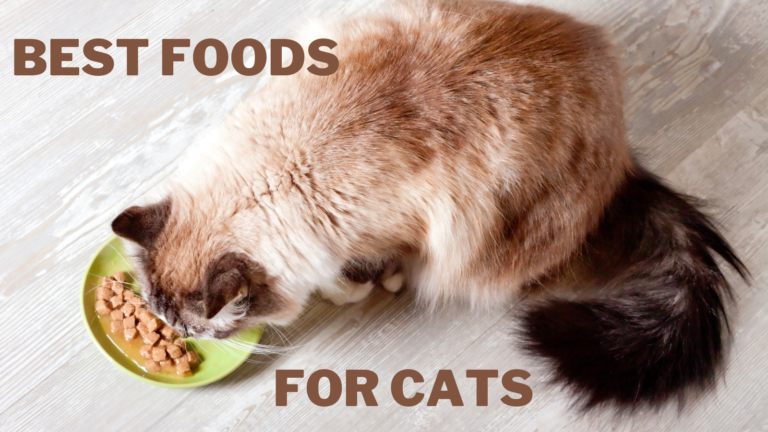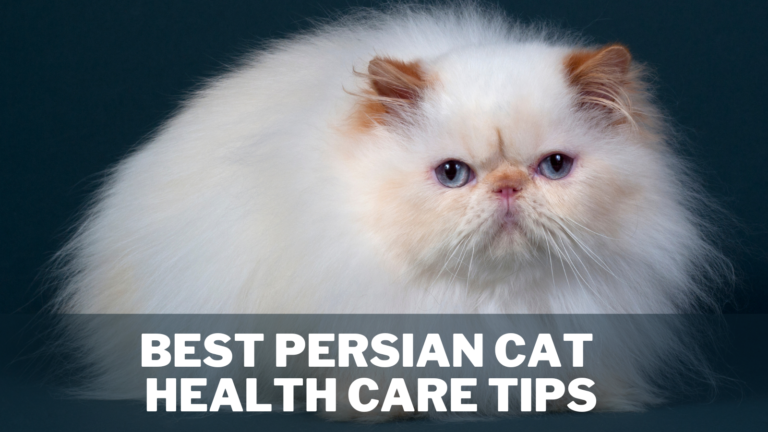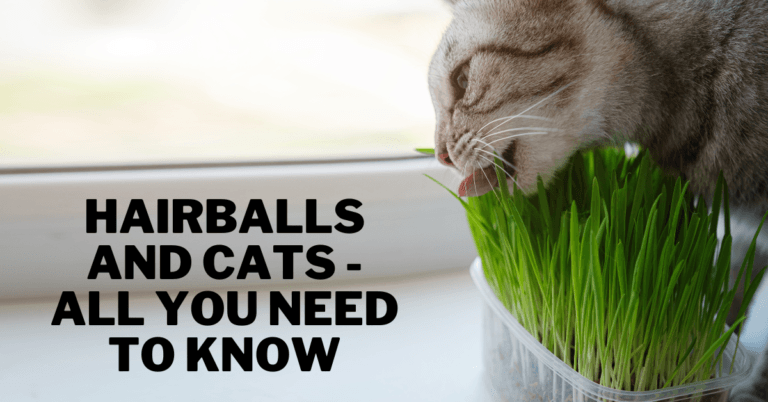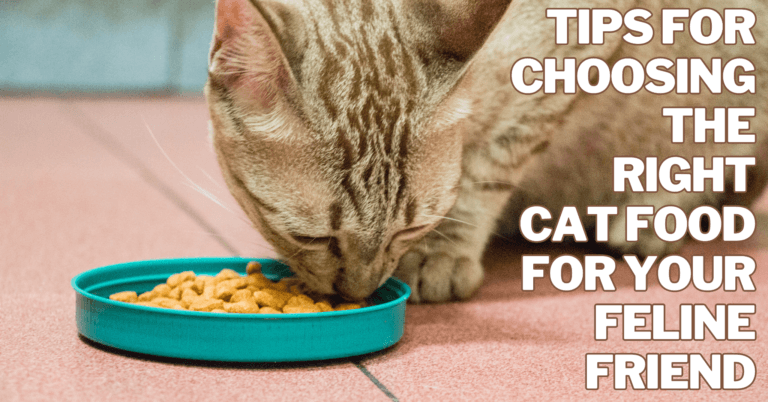Best Cat Care Tips For Beginners
Best Cat Care Tips For Beginners
Have you just recently adopted or welcomed a new cat into your home? What a thrill! Nothing compares to a new feline friend's gentle purr or a fluffy cat's little meows. We believe you are taking in all the adorable you can.
However, if you have never owned a cat, you might be unsure how to care for your pet. In this blog, I will share cat care tips for beginners.
History & Origin Of Cats
Before sharing cat care tips for beginners, I would like to share the history of cats. The most popular animal as a pet worldwide is the cat. Cats have been people's companions ever since the dawn of human civilization.
Cats and humans have been living side by side for at least 10,000 years, although their relationship initially developed as a pragmatic alliance related to the advent of agriculture.
The cat's incredible journey and history span the entire planet, from the African wildcat to the domesticated house cat.
According to recent research, cats coexisted with people thousands of years before they did in Egypt, and this coexistence occurred in Mesopotamia, Turkey, and the Mediterranean island of Cyprus.
In truth, evidence indicates that the domestication of cats began in the Middle East more than 10,000 years ago, and the cat was highly esteemed in many local cultures.
According to researchers, the Middle East is where humanity first tamed cats. The “blotched” or “tabby” coat pattern cat, frequently seen in domestic cats, also appeared in Turkey in the 14th century. African wildcats were first domesticated by the ancient Egyptians 4,000 years ago.
Ancient Egypt revered cats as supernatural, magical, and godlike creatures. Bastet was a feline goddess the ancient Egyptians revered; she was portrayed as half-feline and half-woman.
Ancient Egyptian artifacts frequently feature cats as a symbol of their importance, notoriety, and human connection.
The cats of ancient Egypt were preserved as mummies to be immortalized even after death.
For pest control, the Chinese started domesticating the leopard cat and western wildcat around 3,000 B.C. Cats were prized as devoted pets throughout the Sung Dynasty (960–1279).
In sculptures and paintings, artists have portrayed them. In Chinese tradition, the cat was seen as a lucky animal.
Many people during the Middle Ages believed cats to be demonic and connected them to witchcraft and evil.
Popes and other influential figures consequently demonized cats and frequently tortured and put them to death.
In more recent periods, particularly during the Age of Enlightenment in the 17th and 18th centuries, cats lost their lousy reputation and regained favour as devoted pets.
Currently, cats are among the most beloved and well-liked pets in Europe.
According to a recent Boehringer Ingelheim and IPSOS study, over 91 percent of cat owners feel their cat has a positive impact on their lives. Along with European colonization, cats came to North and South America.
Through their innate abilities to hunt, scare away vermin, and act as devoted companion pets, cats assisted in creating the special human-animal link as the settlers started to farm the land.
Approximately 74 million domestic cats are the most common family pets in the United States today.
Types Of Cats
Creating a list of the “greatest cats” has long been a joke around the Britannica offices. After all, the internet exists.
Two brave and cat-obsessed editors have finally undertaken this chore for your amusement.
After much deliberation, we are pleased to share our list of top cats. Before describing cat care tips for beginners, let me discuss the varieties of cats.
1. Polydactyl
Realistically speaking, polydactyl cats make the best high-fives. Polydactyls, sometimes known as “mitten cats” or “thumb cats,” have a genetic abnormality that gives them extra toes on one or more feet than is typical.
Six to eight toes can be found on each paw of a polydactyl cat. Sometimes, the extra toes give them the appearance that their feet have thumbs.
Although many animals, including humans, can have polydactyly, cats have the cutest cases.
The author Ernest Hemingway undoubtedly believed this—he owned a polydactyl cat personally, and the Ernest Hemingway Home and Museum is currently home to about 50 polydactyl cats.
2. Snowshoe
The Snowshoe resembles its ancestor, a Siamese with white “boots” who showed up in a litter of a Philadelphia Siamese breeder in the 1960s, with a white muzzle and feet, dark “points,” and blue eyes.
Registered purebred Snowshoe cats are uncommon because their distinctive Snowshoe appearance is challenging to breed.
But many cats at shelters exhibit some or all of its characteristics, including white paws, dark masks, and stunning blue eyes, so if you're interested in this cat, you can always obtain “the look for less.”
3. Calico
Due to the genes' sporadic activation, it is impossible to clone a calico cat with the same markings.
Since the X chromosome is where the characteristics required for calico patterning are located, nearly all calico cats are female.
Male calico cats can only exist due to a genetic flaw. They are extremely rare.
4. British Shorthair
The British Shorthair is well known for its appearance and generally laid-back and jovial disposition.
Its enticing chunkiness on the face and torso and its thick, soft fur goes well with its hardy demeanour.
It is thought that British Shorthairs' wide-cheeked faces inspired Lewis Carroll's wide-grinning Cheshire Cat in Alice's Adventures in Wonderland because they are more expressive and look to be smiling than many other cat breeds.
The willingness of British Shorthairs for fun and games, such as fetching, is said to be dog-like.
5. Siamese
The Siamese cat's lovely blue eyes are impossible to ignore. These cats have long been prized for their distinctive patterns and outspoken personalities.
Siamese cats have been presented to dignitaries as presents for a very long time. When an American consul gave one to President Rutherford B. Hayes and his wife in 1878, they debuted in the United States.
These cats are particularly well-known for being quite vocal—people occasionally mistake their loud meows for infants crying!
6. Japanese Bobtail
Japanese Bobtails resemble cats up front and rabbits down back. Just take a moment to process that. It's nearly too adorable to take. Bunny-tail-sporting cats? Register me.
These charming creatures are indigenous to Japan and have existed for a long enough time to appear in traditional artwork.
Japanese Bobtails naturally have short tails, unlike most dogs with “docked” tails.
There are fewer vertebrae due to the genetic abnormality that results in the tail. I forgot to mention that they enjoy fetching.
7. Persian
All the fur. The Persian cat, often known as the Longhair cat outside of the United States, is regarded as the archetypal “luxury” cat, or cat that expects to be maintained in the lap of luxury.
However, they are the most well-liked cat breed worldwide. Even though they are frequently bred for the pushed-in “Pekingese” nose, these cats' portability is probably their best quality.
However, Persians require frequent ultrasounds due to their propensity for kidney illness and the daily grooming required due to their thick coats.
8. Gray Tabby
Coat colour and pattern are described by the moniker “gray tabby,” not a breed. The gray tabby's athletic appearance is unmatched.
Of course, you can breed classic tabbies, but a big part of the appeal of cats is the genetic “rock tumbler” that generates arbitrary combinations of hue and pattern.
However, mixed-breed tabbies can have “dilute” or broken patterns and, rather frequently, white chests, undersides, and/or paws.
The traditional tabby markings are stripes and whorls all over the head, limbs, body, and tail.
The latter is a beautiful combination, and there is no time when a cat is cuter than when its coat is primarily gray.
Its subtle, neutral appearance complements almost anything, especially a pink nose and a lovable disposition.
Characteristics Of Cat
The usual weight of a domestic cat ranges from 2.7 to 4.5 kg (6 to 10 pounds), while non-pedigreed cats can occasionally weigh as much as 12.7 kg (28 pounds).
For males, the average length is 71.1 cm (28 inches), while for females, it is 50.8 cm (20 inches).
The cat's small intestine is only roughly three times as long as its body, keeping with its carnivorous diet. The cat has an essential gut.
The cat's dermal and epidermal skin can quickly renew and prevent infection. The cat has tiny erector muscles throughout its body that connect to hair follicles.
The cat may intimidate adversaries by arching its back, bristling, and hissing despite being a little animal.
1. Coordination And Musculature
Cats have some of the highest levels of specialization among flesh-eating mammals. Their vast, developed brains are among the best. Because they walk on their toes, cats are digitigrade.
The only animals that move like cats are the camel and the giraffe. Unlike the dog and horse, the cat walks or runs by shifting the front and back legs on one side and the front and rear legs on the opposite side.
The cat's body is highly stretchy. The spinal column's vertebrae are kept together by muscles, not ligaments, as humans do.
Thus, the cat can extend or contract its back, curve it upward, or oscillate it along the vertebral line. The cat's shoulder joints allow it to move its front leg practically in any direction.
Cats are strong animals with excellent coordination, so they almost always land on their feet if they fall.
2. Teeth
The cat's teeth are designed for three different tasks: cutting, anchoring, and stabbing (molars). Because they lack flat-crowned crushing teeth, cats must cut up their food rather than eat it.
Besides its canines and molars, the cat's teeth are mainly inactive; most of its cheek teeth don't even touch when the mouth is closed.
All cats have incisors that are 3/3, canines 1/1, premolars that are 3/2, and molars 1/1 on either side of the upper or lower jaws.
The upper jaw has 16 teeth, whereas the lower jaw has 14 teeth. Twenty-four are the primary or milk teeth; at around five months, the permanent teeth replace the primary teeth. The jaw is movable on each side.
Even if the cat possessed teeth adequate for grinding, grinding movements would not be feasible because each half of the jaw is hinged to the skull by a transverse roller that fits snugly into a trough on the underside of the skull.
3. Claws
The cat has a beautiful mechanism for retracting its claws when not needed. The toe's end bone, which supports the claw, can be expanded or contracted by pivoting it over the following bone's tip.
In addition to spreading the toes widely, the movement that unsheathes the claws causes the foot to expand to more than twice its regular size, turning it into a formidable weapon.
All cat family members, except the cheetah, have this claw-sheathing mechanism. The inner portion of the nail has blood capillaries despite the absence of nerve endings in the nail itself.
4. Senses
Cats typically like the nighttime. A coating of guanine in the cat's eye makes the retina even more sensitive to light, which makes the cat's eye sparkle brightly at night.
The eyes themselves do not adequately discriminate between colours because their big pupils change size depending on the light they are exposed to.
Cats have a third eyelid, often known as a nictitating membrane or the haw. The general health of the cat is frequently determined by its appearance.
For this reason, a cat whose nasal passages get blocked due to illness may appear to lose its appetite.
The cat's sense of smell, well-developed in adults, is essential to its food judgment. Cats are adept at distinguishing the smell of nitrogenous compounds, such as fish.
Cats have a keen sense of touch. The fine tufts of hair on the ears, the cheek hairs, the whiskers, and the cheek hairs are all susceptible to vibration.
While the whiskers (vibrissae) purpose is still not fully understood, it is known that cats become momentarily unable to move if their vibrissae are removed.
In addition to the nose tip, the toes and paws are susceptible to touch. Cats have a keen hearing sense as well.
They can turn their ears in the direction of a sound far more swiftly than a dog because they have about 30 muscles in their ears (compared to only 6 in humans). Cats' ears are sensitive to ultrasonic vibrations up to 85,000 Hz.
5. Behaviour
The cat communicates its emotions and intents through sophisticated facial expressions, vocalizations, and tail and body postures. These mixed signals aim to widen, narrow, or maintain social distance.
One distinct social behaviour is rubbing the owner's side of the head, lips, chin, or tail against furniture and other objects.
Scent glands are located in some regions of the cat's body, which may help the cat create a comfortable odour in its surroundings.
All cats have a tongue with a patch of sharp, backward-facing spines called filiform papillae near the tip, which resembles and feels like a coarse file and aids the cat in self-grooming.
Cats have a well-established propensity for cleanliness and carefully brush themselves, especially after meals. Domestic cats and other Felis species purr in contrast to lions and other big cats, which roar.
It has been said that purring sounds like a low, continuous rattling hum and is frequently perceived as a sign of happiness or joy.
However, purring may also be heard in cats who are hurt or in pain, suggesting that this vocalization serves as the cat's “mantra”— a calming, self-comforting sound and a signal that conveys a courteous attitude.
6. Hearing
Cats have incredibly keen hearing, with a range that extends above and below the frequencies that humans can hear. They have better hearing than most humans and even most dogs.
The cat's hearing also serves as a direction finder, which is helpful when hunting. Cats usually move their heads toward the sound as they listen to locate its source.
Compared to us, cats have a deeper and more tapered ear canal. An accumulation of debris and wax in this deeper canal can cause irritation and subsequent infection, though less so than in dogs.
The inner ear's semicircular canals, filled with liquid, are crucial for preserving equilibrium. Cats' agility and superb sense of balance result from their being developed in them.
The expression “Cats always land on their feet” has its genesis in cats, which can typically sense their body posture at all times and quickly right themselves after falling.
7. Digestive And Urinary Tracts
The stomach, small intestine, and large intestine are all parts of the digestive system (colon). This system collects water, removes waste, and breaks down food into essential nutrients.
Vomiting or diarrhea, which can be caused by various conditions such as viral infections, worms, stress, or ingesting bones, string, hair, or other foreign objects, are frequent symptoms of digestive issues.
The urinary system removes waste products from protein cleavage and aids in fluid balance. The ureters transport waste to the urinary bladder, which stores it after the kidneys filter it.
Through the urethra, urine leaves the body. During copulation, the urethra serves as a sperm conduit in men. Small and “hidden,” the feline penis is inside the scrotal pouch protecting the testicles.
Because of this, it can occasionally be challenging for pet owners to tell whether their cat is male or female.
The typical sign of a urinary infection is frequent, blood-tinged urine dribbles. Feline lower urinary tract disease, often known as feline urologic syndrome, affects cats frequently.
Signs may resemble symptoms of an illness. Crystals in the urine accumulate and become a sludge irritating the urinary tract, leading to feline lower urinary tract disease.
This is particularly hazardous for male cats because their small, curved urethra removes urine from the bladder. Kidney failure may result if the cat's urinary tract becomes obstructed.
In many cases, straining while urinating or defecating is linked to digestive and urinary issues. It could be challenging for cat owners to identify the issue's root cause at first glance.
Supervising your cat as it urinates and checking the litter for the type and colour of the urine and feces is crucial.
Frequent, runny, mushy, or uncharacteristically coloured stools (frequently yellow, gray, or black) are typically the result of diarrhea. You must consult a veterinarian for any indication of blood in the stool.
Repeated, unsuccessful attempts to pass a bowel movement may indicate serious constipation or obstruction.
Male cats who strain, spill blood, growl, or have a sore abdomen are prone to have feline lower respiratory disease.
Cat Care Tips For Beginners
Keeping your feline companion happy and healthy begins with a few easy steps, some of which may be added to your cat's daily routine immediately.
Jeff Werber, a veterinarian in Los Angeles who also owns eight cats, gives cat owners some sound advice on assisting their feline companions to live their best possible lives.
It's important to start cat care off on the right foot. It all begins with developing good everyday habits.
Now let's follow some essential cat care tips for beginners:
1. Brush Your Cat Every Day
Hairballs that can form in the digestive tract can be reduced by brushing or combing your cat daily.
Cats spend a lot of time grooming themselves. Therefore, some owners might not be aware that brushing can benefit their pets by removing loose hair.
According to Werber, the secret to persuading a cat to cooperate when brushed is associating brushing with joyful occasions.
Perhaps you always brush before eating, he suggests. Then, your cat will link it with a tasty object.
2. Don't Feed Your Cat Too Much Dry Food
Cats cannot become vegetarians, even temporarily, unlike dogs. They base their meals mostly on meat, and Werber believes that meat should always be consumed during the day's main meal.
He warns that restricting cats to dry food diets may cause them to eat too many carbohydrates, which are harmful to cats in big doses.
Werber states, “We find cats getting Type 2 diabetes from eating too much dry food and getting fat.”
It can be tempting to treat your dogs and cats the same if you have both, but this is not a smart idea because cats cannot take carbs as well as dogs can, nor is dog food good for cats.
3. Pay Attention To Your Pet's Thirst
Due to their evolution from desert-dwelling ancestors, domestic cats do not exhibit the same thirst drive as dogs. They must obtain the majority of their water from food.
A mouse, for example, has roughly 70% water, compared to 78% water in canned food, which is what a cat may typically consume in the wild. Only 5% to 10% of dry food is usually water.
If you always provide fresh water for your cat, you might observe that they seem to drink more while eating more dry food.
Watch your cat closely for symptoms like sunken eyes, lethargy, and panting, as elderly and nursing cats may be more susceptible to dehydration than others.
4. Provide A Sufficient Number of Litter Boxes
One litter box per cat, plus an extra, is a decent rule of thumb, according to Werber, when it comes to restrooms. You should, therefore, put up four boxes if you have three cats.
It would be best if you considered where those boxes go. Although cats might not be willing to utilize the bins there, people enjoy stowing them away in obscure locations like a cellar or a dark corner.
Consider how it occurs in nature, advises Werber. He claims that when carrying out those activities, the animal is “vulnerable.”
They want to be able to see their surroundings. For the same reason, your pet might not want to utilize a box with a cover.
5. Don't Assume You Know Why A Cat Is Peeing Outside The Box
Nothing irritates a cat owner more than when Kitty refuses to use the litter box and poops on a favorite area rug or brand-new couch.
What might cause a cat to act in this manner? You should rule out illness as a possible cause before considering other possibilities, advises Werber.
Visit the veterinarian with your cat to have any diseases, such as a urinary tract infection that may be the cause of this new behaviour examined.
Check if your pet enjoys using the litter boxes after an illness has been ruled out. By experimenting with several types of litter, find out whether your pet has a preferred brand.
Scoop the box daily and be meticulous in keeping it tidy. Consider moving the litter box to a more peaceful area (away from noisy appliances) or a simpler place for your cat to access.
6. The Use Of A Scratching Post By Cats
Want to avoid having ripped threads all over your brand-new couch? Teach your cat to utilize a scratching post to prevent them from damaging expensive furniture.
According to Werber, a standard error made by owners is failing to realize the importance of giving the scratching post attractiveness.
Put it in the room's center, to begin with, he advises. (Too many people put it apart from the household's social activity where a cat could easily disregard it.)
When you initially bring the post home, the vet suggests sprinkling it with catnip. When your pet has developed a habit of utilizing it, you can gradually shift it to a less busy area and stop giving it catnip.
7. Spay Or Neuter Your Cat
According to Werber, having your cat spayed or neutered is the best thing you can do for them over the long term. He continues, “When a female cat goes into heat, it's quite painful for her.”
The safety of your cat can also be improved by spaying and neutering. Male cats that haven't been neutered will fight, which increases the chance that they'll bite and scratch someone, spreading infections.
Female cats' circumstances are also not much better. The stress of mating and giving birth to many litters of kittens may be highly stressful for female cats, who can get pregnant as early as four months.
This is in addition to the stress that owners experience when their female cats go into heat. Moreover, cat adoption is preferable because countless abandoned cats are in shelters awaiting adoption.
8. Travel Safely With Your Pet
Do not let your cat ride unrestrained in a car, even if they prefer it. The motorist is distracted by it, and a cat may become a dangerous projectile in the event of an accident.
Additionally, Werber advises “never, ever leaving your cat alone in a parked automobile.”
A car soon becomes uncomfortable for a furry pet, even in cooler weather and with cracked windows.
A cat can pass away in a warm automobile in minutes. If you don't want to bring your cat inside, leave them home.
9. Choose A Cat-Friendly Vet
It might not be very comforting when cats have to spend significant time in the waiting area with dogs roaming around. A canine clientele dominates some veterinary practices.
A vet with separate waiting areas for dogs and cats is what you should seek, advises Werber.
While that would be ideal, not many medical clinics have the room to make that kind of arrangement.
Werber suggests requesting a prompt call into the exam room if your preferred veterinarian doesn't offer two waiting areas.
10. Grooming
Cats are quite good at grooming themselves to maintain sleek and lustrous fur.
Cats with short hair need to brush occasionally, while long-haired cats need to brush more frequently to help with shedding and hairball prevention.
According to Petcha, any changes in your cat's grooming behaviour, such as gnawing or licking at a specific region, itching, or losing fur, are worth mentioning to your vet as a potential symptom of skin conditions or allergies.
Regular nail trimming for your cat helps reduce any scratch-related harm. Finally, brushing your cat's teeth is necessary almost as frequently as you are.
Ask your veterinarian about the foods and products used for at-home dental care. Never administer human toothpaste to a cat.
Conclusion
If you're thinking of obtaining a new cat or kitten, pick a time when your home is peaceful (not during a family gathering, for example), and maybe choose a day or two when you can assist the animal settling in and be there.
At the same time, it learns its surroundings rather than immediately before you go on vacation. I've tried to share the best cat care tips for beginners, and I hope you will benefit from them.
I trust you enjoyed this article on the Best Cat Care Tips For Beginners. Please stay tuned for more blog posts to come shortly. Take care!
JeannetteZ
My #1 Herbal Remedies For Pets Recommendations
Your Opinion Is Important To Me
Thoughts? Ideas? Questions? I would love to hear from you. Please leave me your questions, experience, and remarks about this article about the Best Cat Care Tips For Beginners in the comments section below. You can also reach me by email at Jeannette@Close-To-Nature.org.
Disclosure
This post may contain affiliate links. As an Amazon Associate and other affiliate programs, I earn from qualifying purchases at no extra cost to you. Please read my full affiliate disclosure.
You might also enjoy these blog posts:
Best Steps To Grow Grass In Containers
Best Steps To Grow Mushrooms In Containers
Best Steps To Grow Ocra In Containers
Best Steps To Grow Drumstick Alliums In Containers




































